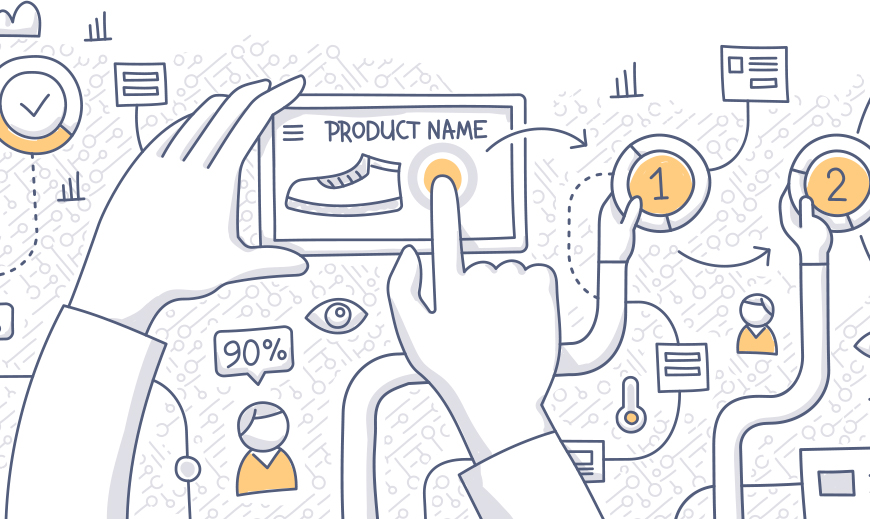
When we think about creating experiences for clients, it’s important to consider not just what they say, but to examine the ways they interact with our organizations. In the world of software, it’s commonplace to have a dedicated User Experience (UX) Designer to study how people interact with the systems built for them—this same technique can be applied in the real-world. Little choices about UX are all around us and viewing solutions through that lens can help you see old problems in new ways.
DESIRE PATHS
Desire paths are the footpaths trampled into the grass, which usually provide a shorter route than following the sidewalk. They’ve become a useful metaphor for UX designers because they’re a very clear demonstration of the divergence between a designer’s intent and user behaviour. You can put up a fence or a Keep off the Grass sign to prevent desire paths from forming, or you can take the desire path as a cue of the users’ needs and pave the path. Some universities, including UC Berkeley, waited to see where paths naturally formed before they put down sidewalks.
Because of the size of population we serve at IBAO, we try to answer as many questions as possible with our website to reduce the number of phone calls we get. We treat phone traffic as a desire path carved into our lawn. If we’re getting the same question a lot, it lets us know our website isn’t doing its job in that instance. We track the most frequent calls and adjust our website accordingly, making the required information more prominent or easier to find—our way of laying down a new sidewalk.
ELEVATOR MIRRORS
During the early days of high-rise buildings, building owners would receive a lot of complaints about rush hour delays for elevators. Russ Ackoff, a professor at the University of Pennsylvania, set out to solve the problem. Short of demolishing the building and rebuilding it with more elevators, there wasn’t a straightforward engineering fix. Ackoff had the insight that instead, he could try reducing complaints by providing a distraction during the wait. He suggested installing floor-to-ceiling mirrors. While waiting, people could adjust their ties, fix their hair or covertly check out the other passengers. After installing mirrors, elevator complaints dropped to nearly zero. Now you can find floor-to-ceiling mirrors at most elevator banks.
One of the key takeaways can be easily summarized with a piece of advice for writers on receiving feedback: take the note, not the suggestion. When a user has a problem, rather than trying to solve it as it was stated (make the elevators faster), investigate if there’s a way to address the underlying cause (make people feel less impatient). To go back to the example of the IBAO website, rather than making sure we have the answer people need available online, in some cases it’s better to reevaluate our process to prevent the question in the first place.
CUSTOMERS KNOW BEST (COLLECTIVELY)
Thinking of your entire business as a product, you can view client interactions and feedback as an opportunity to collect data on their experience and make appropriate adjustments. Obviously you can’t please everyone all the time, but by carefully observing and making strategic alterations to your workflow, you can utilize the hive mind of your client base to refine your services and offer a superior customer experience.
